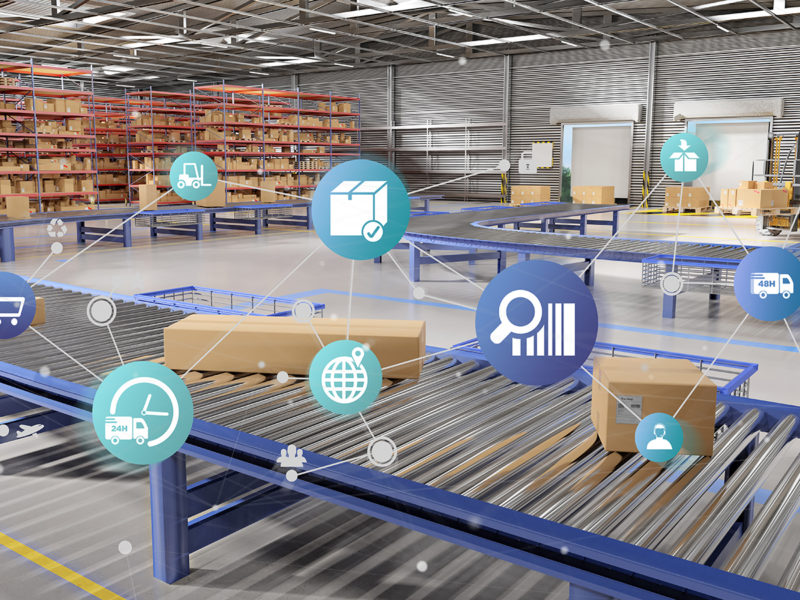Once upon a time, procurement experts could set clear priorities on how to add value for cost, delivery and quality. But procurement leaders must shift focus in a pandemic-tinted world that is rapidly digitalizing and placing more emphasis on corporate responsibility, says Miguel Cossio, director of global supply chain research for Gartner.
“We go to our business partners and ask them which of these are the most important things for us to focus on,” Cossio said during Amazon Business’ recent digital Reshape conference. “And the answer is ‘Everything.’”
The days of reacting to challenges with an eye solely on the bottom line are likely gone, he says; procurement officers now must give special attention to aspects such as:
- High-impact risk management.
- Rapid industrywide digital transformation.
- Flexible work considerations.
- And ethical sourcing practices.
With supply chain issues likely to persist, Cossio says there are four key paths companies can take if they want to improve procurement practices in 2022 and beyond. His insights provide some tips for distributors on where they can help solve customer pain points.
Manage Risks
“The risk landscape is changing dramatically,” says Cossio. “Risk is faster, more impactful and more pervasive than ever. How can we insulate our organizations from persistent high-risk environments?”
The past few years have been marred by disruptions carrying global implications, including the current pandemic, trade wars, record-breaking climate events and large-scale protests. Companies continue to battle these events, which often cascade and leave leaders with no real playbook to help navigate new challenges as they arise, says Cossio. Given the rate of disruption, the typical replenishing phase never happens, and readiness to respond is depleted faster than it can be renewed, he says.
However, companies can limit exposure to high-impact disruptions by managing what is referred to as a supply chain surface area, says Cossio. “Our research found that, by reducing the supply chain’s footprint by strategically managing the movement of goods and services throughout the value chain, the supply chain can reduce its overall surface area and in effect, make yourself a smaller target for disruption to hit,” he says. This can be done by integrating surface area awareness early in the sourcing and procurement decision-making process to reduce the movement in supply chains and reduce the physical footprint over supply chains as a whole, says Cossio.
Invest in Digital Transformation
Companies in 2022 are on a record-breaking pace when it comes to investing in new technology, says Cossio. The COVID-19 pandemic accelerated the need for digital operations. Companies without digital engagement solutions will be unable to support effective remote working in all verticals, and a lack of analytic insights to unearth hidden risks and opportunities will “throttle recovery as well,” he says.
The amount of time and resources that still go into transactional activities also is holding back procurement leaders, says Cossio. He says the average procurement function still features one-fourth of a team’s allocated time on transactional activities, including essentially processing point-of-sale functions. The percentage has fluctuated over the years, according to Gartner data, but it’s not falling fast enough, says Cossio. “It just means that a lot of our functions’ resources are still tied up in places where we know technology can do a better job,” he says.
Investing in the right technology can mean more savings, but so can implementing updated policies, new staff competencies or role redesigns, says Cossio. A newly designed workflow can pair with procure-to-pay, advanced analytics, robotic processes, automation and other tech-driven additions to allow procurement teams to operate more efficiently, he says.
Adapt to Future-of-Work Realities
“The pandemic will have long-lasting impacts on business and society more broadly, but perhaps the most important effect is how it is changing the way people work,” Cossio says. Most human resources leaders expect that at least some of their employees will work remotely even after the pandemic, he says. These more-permanent shifts to “hybrid work” figure to be massive drivers of industry transformation, which procurement leaders must be prepared to support, says Cossio. There also is a growing expectation of work flexibility that will likely accelerate as younger generations enter the work force and as improved technology enables virtual experiences, he says.
“Progressive organizations are moving away from the office-centric design and look to adopt a human centric design,” says Cossio. Procurement leaders should consider moving away from “visibility-based management” and towards “empathy-based management,” where management doesn’t have to physically observe a person working to trust they are being productive, he says.
Source Responsibly
Perhaps more than ever, stakeholders have an expectation that companies are focused on environmental, social and governance (ESG) issues, says Cossio. These expectations now require organizations to focus not only on their own operations, but also on the operations of their supply chains, he says. Gartner data shows that 93% of organizations who responded to a recent survey say they are planning to invest in “responsible sourcing” within the next 18 months. This could be a challenge for procurement leaders, as many of them rely on suppliers’ codes of conduct that they ask buyers to acknowledge and then hope suppliers deliver on expectations, says Cossio.
However, relying on others to act responsibility might not be enough, he says. “We have to operate under the assumption that there is an issue somewhere hidden in our supply chain,” says Cossio. At the beginning of procurement processes, most companies are focused on compliance or ensuring buyers are following laws; instead of just hoping and reacting, however, companies can take it a step further by differentiating themselves from other brands in their markets, says Cossio. Companies can position themselves by preaching eco-friendly and ethical practices and subsequently following through on those promises, he says. These practices can include reducing emissions or asking suppliers to pay workers a living wage instead of a minimum wage, says Cossio.
Companies also can collaborate and share responsible sourcing practices to tackle larger-scale issues, such as forced labor and deforestation, he says. “The key thing that all procurement leaders should take into consideration is, ‘how are we going to make our responsible sourcing goals relevant to our organization and our suppliers?’” says Cossio. “We have to think about entire supplies for our lifecycle and think about embedding those requirements and those expectations along the entire cycle.”
Related Posts
-
The retailer and e-commerce giant will open 3 operations facilities in Alabama, where the company…
-
The new facility in Fargo, which is more than 1 million square feet, will create…
-
Company says ‘first-of-its-kind’ facility creates more than 200 jobs and grows its engineering, manufacturing and…





